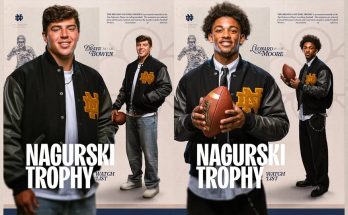The Texas Longhorns Unveil a State-of-the-Art, $1.3 Billion Renovation to Darrell K. Royal Texas Memorial Stadium, Redefining the Standard for College Football with Luxury Suites, Expanded Seating, and Cutting-Edge Technology for an Unparalleled Fan Experience
In a bold and unprecedented move that sets a new benchmark in collegiate athletics, the University of Texas has officially unveiled a staggering $1.3 billion renovation of Darrell K. Royal-Texas Memorial Stadium. This monumental transformation redefines the college football experience, blending tradition with technology, history with innovation, and pageantry with unparalleled luxury. The project, now hailed as the most ambitious stadium overhaul in NCAA history, positions the Longhorns at the pinnacle of game-day excellence and fan engagement.
A Monument to Modernity and Tradition
Located in the heart of Austin, the iconic Darrell K. Royal-Texas Memorial Stadium has long stood as a cathedral of college football. With the completion of this massive renovation, it now also becomes the flagship venue for future-forward design and immersive experiences. Originally opened in 1924, the stadium has undergone several expansions and facelifts over the decades, but none as comprehensive or transformative as the current upgrade.
This ambitious project was not just about adding more seats or installing bigger video boards—it was about reshaping how fans, players, and recruits experience football in Austin. From luxury suites that rival five-star hotels to interactive digital interfaces embedded into seatbacks, the stadium now offers a one-of-a-kind game-day environment that merges cutting-edge innovation with Texas pride.
Luxury Like Never Before
One of the most talked-about features of the renovation is the addition of over 150 new luxury suites and premium club spaces that deliver an NFL-caliber hospitality experience. The suites range from exclusive skyboxes to field-level lounges, offering stunning views, plush seating, gourmet catering, and private entrances. Each suite is fitted with the latest audiovisual tech, including in-suite replay screens, real-time stat displays, and customizable lighting environments.
“The goal was simple,” said UT Athletic Director Chris Del Conte. “We wanted to create a stadium where every guest—from students to alumni, from families to Fortune 500 CEOs—feels like they’re getting a first-class experience. And we believe we’ve done that.”
The suites are complemented by over 10 new hospitality clubs, including the ultra-exclusive “Longhorn Legacy Lounge,” which showcases memorabilia from Texas legends and features direct access to the 50-yard line.
Expanded Seating and Fan Inclusivity
While luxury spaces draw headlines, the renovation also emphasizes inclusivity and broader fan access. The stadium’s overall seating capacity has been expanded to 112,000, solidifying its place as one of the largest college football venues in the country. Thousands of new seats have been added to the north and south ends of the stadium, many with improved sightlines and wider legroom.
New “Family Zones” offer kid-friendly amenities, including interactive games and family lounges. A revitalized student section, now dubbed “The Horns Den,” features integrated tech rails where fans can charge devices, order concessions, and access alternate camera angles of the game in real-time.
Importantly, over 20% of the new seating is set aside for budget-conscious fans, including alumni discounts and military veterans. The university made it a point to balance luxury with accessibility.
Next-Gen Technology for a Next-Gen Experience
Perhaps the most jaw-dropping upgrades are found in the stadium’s technological innovations. The venue now boasts the largest 360-degree wraparound video board in college football, spanning more than 1,200 feet and delivering crisp, 8K visuals that transform replays, graphics, and fan interaction into a visual spectacle.
Wi-Fi 7 connectivity is provided stadium-wide, ensuring seamless digital access for over 100,000 devices simultaneously. Fans can use the Texas GameDay app to order food from their seats, access AR replays, and participate in live fan polls that are displayed on the big board.
A new AI-driven fan concierge system, nicknamed “Bevo Bot,” helps fans locate restrooms, shortest concession lines, and even gives real-time weather updates. Smart cameras integrated throughout the stadium monitor crowd flow and adjust traffic patterns to ease congestion in real-time.
“We didn’t just want fans to watch the game—we wanted them to live it,” said Lead Architect Taylor Montgomery of HKS Architects, the firm behind the renovation. “Every detail was designed to enhance real-time engagement.”
Sustainability and Environmental Leadership
The renovation also emphasizes sustainability, making Darrell K. Royal-Texas Memorial Stadium one of the greenest stadiums in the nation. The project incorporates over 15,000 solar panels, a state-of-the-art water recycling system, and a rooftop garden that helps insulate the stadium while offering another fan hangout spot with panoramic views of the Austin skyline.
The stadium has officially been awarded LEED Platinum certification—the highest possible recognition for energy efficiency and sustainability.
“This stadium is a symbol of what’s possible when tradition, innovation, and environmental responsibility come together,” said UT President Jay Hartzell. “We’re not just building for today—we’re building for the next century of Longhorn football.”
Recruiting Edge and Competitive Dominance
This world-class stadium is not just a benefit for fans—it’s a game-changer in recruiting. Prospective players are now greeted by a high-tech, immersive experience upon arrival, including a virtual reality simulation that allows recruits to “run out of the tunnel” onto the field before ever suiting up.
The new state-of-the-art locker room, recovery center, and training facilities rival those of any NFL franchise. The stadium now includes a 40,000-square-foot athlete-only performance hub with cryotherapy, hyperbaric chambers, sleep pods, and even a biometric recovery system that tracks individual performance metrics.
“Facilities matter in today’s arms race of college football,” said Longhorns head coach Steve Sarkisian. “And now, nobody has it better than Texas. This is the future.”
A Financial Marvel
Financing for the $1.3 billion project came from a mix of private donors, naming rights deals, increased ticket sales, and long-term corporate partnerships. The university reported that over $750 million of the funding was secured through private contributions, including a $200 million lead gift from a notable Longhorn alumnus who chose to remain anonymous.
Corporate partners include global brands like Dell Technologies, H-E-B, and Samsung, which will all have dedicated fan experience zones inside the stadium.
With the enhanced revenue potential from luxury seating, expanded concessions, and year-round stadium events (including concerts, festivals, and esports tournaments), UT officials anticipate recouping the investment within 12–15 years.
Longhorn Nation Reacts
The fan response to the renovation has been overwhelmingly positive. Within 48 hours of unveiling, the new suites were 98% sold out for the 2025 season. Season ticket renewals are at an all-time high, and the university’s merchandise sales spiked 67% the week of the announcement.
Social media lit up with fans praising the blend of nostalgia and innovation. “This stadium is absolutely bananas,” one Twitter user wrote. “It’s like the Roman Colosseum if it had Wi-Fi and brisket nachos.”
Even former Longhorn greats chimed in. Vince Young posted on Instagram, “I’d come back just to sit in one of those suites. This is Texas. This is family. This is home.”
The Future of Football is Here
As the Texas Longhorns prepare for their upcoming debut season in the SEC, the newly renovated Darrell K. Royal-Texas Memorial Stadium stands as a declaration of intent—not just to compete, but to dominate.
No other school in America can boast this combination of tradition, technology, and spectacle. From the moment fans walk through the grand new entry plaza—flanked by towering statues of Texas legends—they know they’re in a place where history meets destiny.
And as the burnt orange faithful prepare to cheer “Hook ‘em Horns” under Friday night lights or Saturday afternoon skies, one thing is abundantly clear: The standard has changed.



